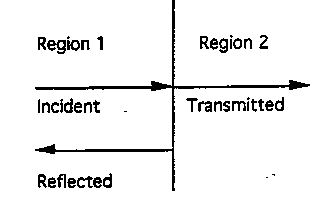
ELECTRICAL ENGINEERING DEPARTMENT
SOUTHERN METHODIST UNIVERSITY
FIBER OPTIC TELECOMMUNICATIONS
SMU EE 5303 NTU TM-513-N Midterm #2 April 19, 1995
Name (print): ________________________
Location: ________________________
Note #1: each question is worth 5 points.
Note #2: Some of the multiple choice questions may have more than one correct answer listed. If so, circle all of the correct responses for the question.
Note #3: Please print your name at the bottom of the remaining pages.
Note #4: please provide a brief explanation of your answers to multiple-choice type questions.
1. In the figure below, light is incident from Region 1 with n1 = 3.45, into Region 2 with n2 = 1.

i) Find the fraction of light reflected back into Region 1.
ii) Find the fraction of light transmitted into Region 2.
2. The index that describes the propagation of a pulse or an optical signal that contains information is
a) the group index ng = c/(d/dk)
b) the material index n = c/(/k)
and the index that describes the propagation of a plane wave or a ray is
c) the group index ng = c/(d/dk)
d) the material index n = c/(/k)
Briefly explain your answers.
For problems 3 through 8 consider the five curves that correspond to quenched SiO2 (Case A) that were plotted from equations in the Electronics Letters paper (session 8b) by J. P. Sih (session 23). The curves are on pages 4 and 5:
3. At what wavelength will a pulse propagating in this material have zero dispersion? Indicate the wavelength on the appropriate graph and give a numerical value for the wavelength.
4. Consider two pulses propagating in the material at wavelengths less than the zero dispersion wavelength. The spectral bandwidth of one pulse is centered at a free space wavelength of = 0.9 µm and the spectral bandwidth of the second pulse is centered at a free space wavelength of = 1.0 µm. Which pulse will travel faster in the quenched silica?
5. Consider two pulses propagating in the material at wavelengths greater than the zero dispersion wavelength. The spectral bandwidth of one pulse is centered at a free space wavelength of = 1.4 µm and the spectral bandwidth of the second pulse is centered at a free space wavelength of = 1.5 µm. Which pulse will travel faster in the quenched silica?
6. Which curve among the five graphs best explains your answer to problems 4 and 5? Why?
7. Now consider two rays propagating in the material. The wavelength of one ray is = 1.4 µm and the wavelength of the other ray is = 1.5 µm. Which ray will travel faster in the quenched silica?
8. Which curve among the five graphs best explains your answer to problem 7? Why?
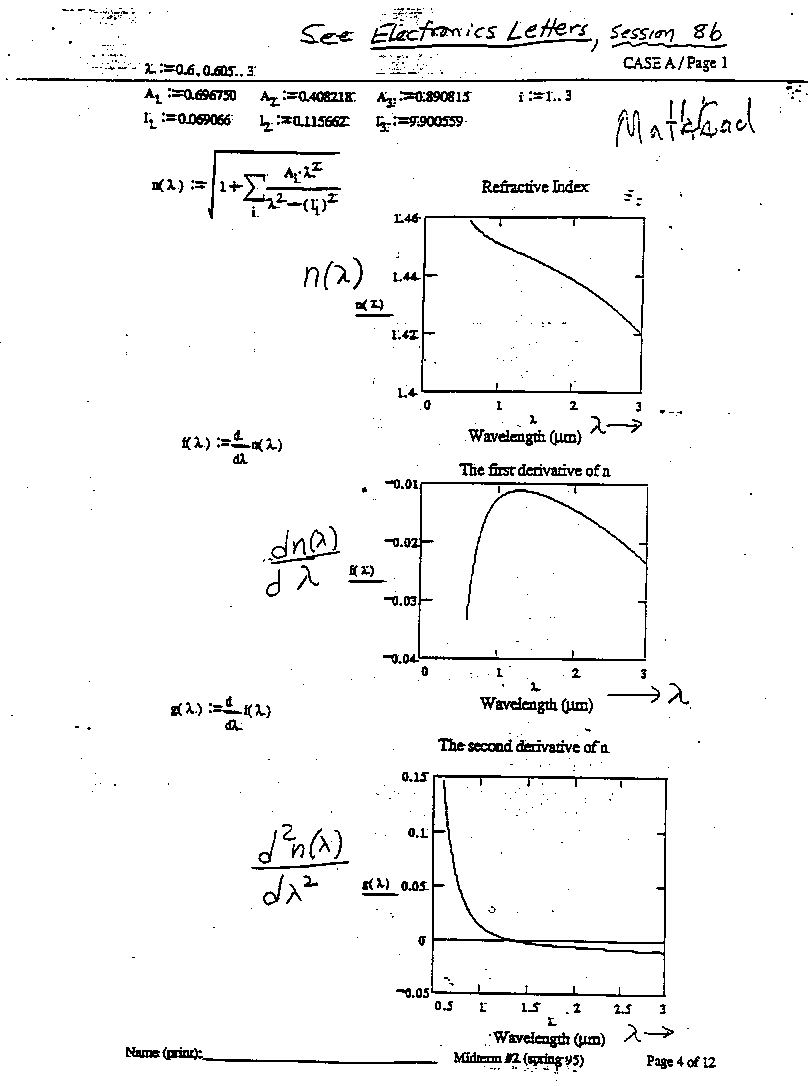
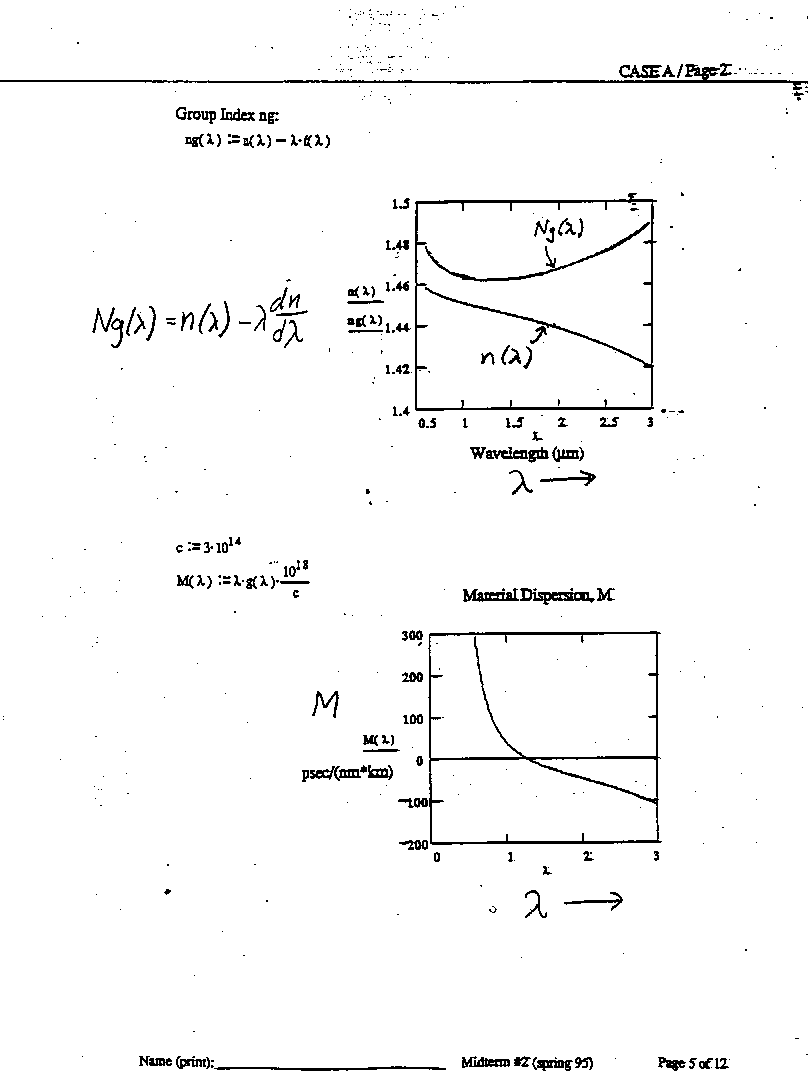
9. Find the amount of pulse spreading in pure silica for a laser operating at a free space wavelength of 1.6 µm. The laser has a spectral emission width of 2 nm. The length of the silica is 3000 km. (You may want to refer to Fig. 3-8 below.)
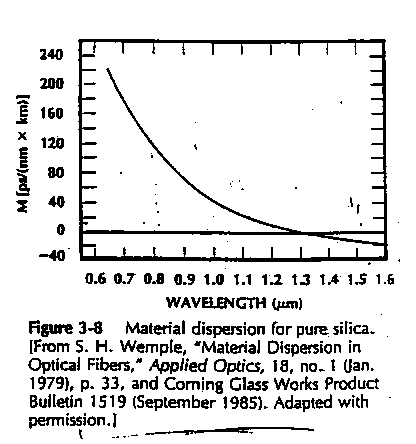
10. What is the maximum data rate allowed for the communication link described in problem 9? Assume a non-return to zero (NRZ) digital signal.
11. How is a soliton different from conventional optical pulses that propagate on optical fibers? Briefly explain your answer(s).
a) Only one soliton pulse can be in a fiber at a time.
b) A soliton pulse does not spread.
c) A soliton pulse has to have a certain pulse profile and pulse energy
d) A soliton pulse travels faster than a conventional pulse but contains less information.
12. A SI fiber has core refractive index of n1 = 1.455, and a cladding index of
n2 = 1.450. The normalized frequency is 2.4. Compute the fiber core radius, numerical aperture, and spot size at a wavelength of
13. How many modes can propagate in the fiber described in problem 12?
14. Sketch the refractive index profile of i) a step-index (SI) fiber; and ii) a GRIN fiber.
For the remaining problems, you may want to consult the figures on pages 9 and 10.
15. For a symmetric slab waveguide with index n2= 3.55 and n1 = 3.6, how many modes will propagate if d/= 4.0?
16. Consider an asymmetric slab waveguide with n1 = 2.29, n2 = 1.5, and n3 = 1.0. What range of thicknesses of the central region (the layer with n1 = 2.29) will support exactly 2 TE and 2 TM modes?
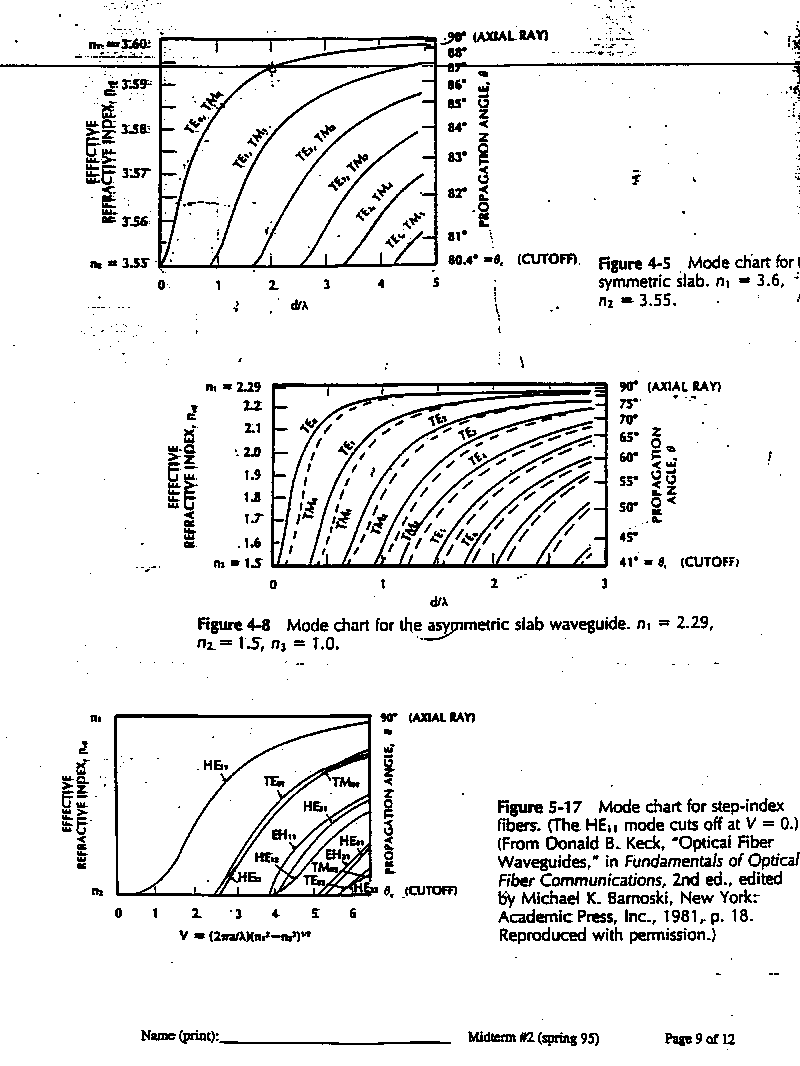
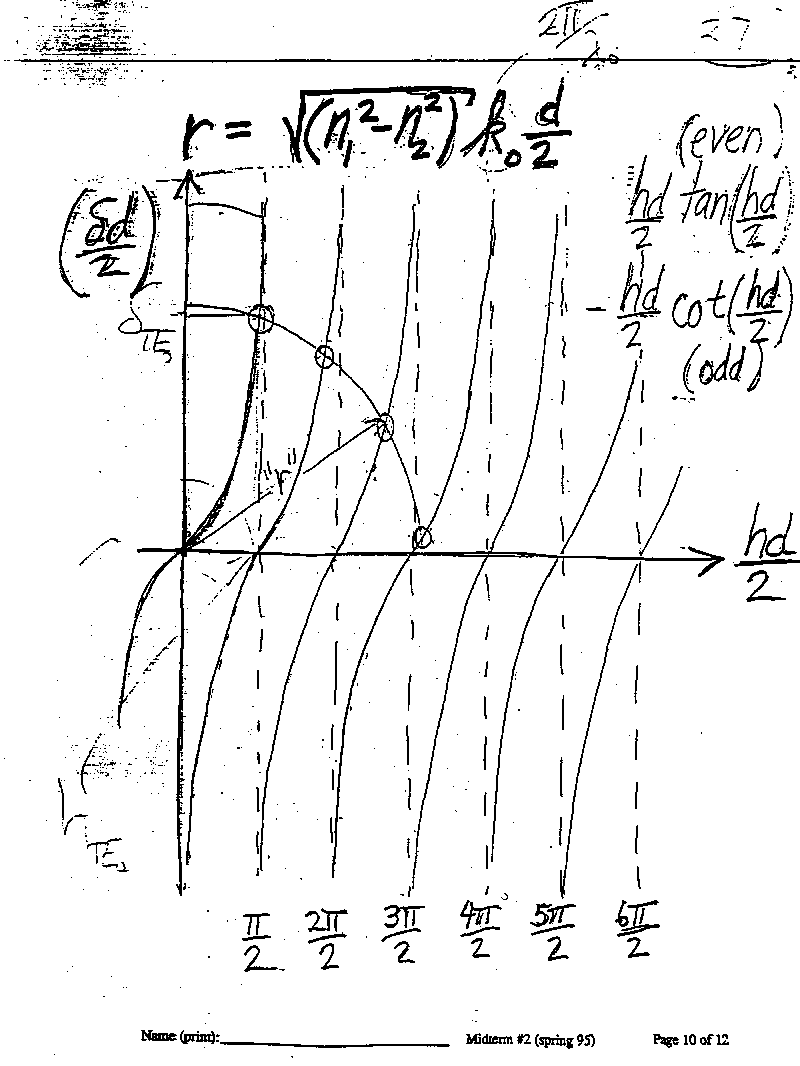
17. If the diameter of a step index fiber is 10 µm and the fiber is single mode at a wavelength of 1.55 µm, what is the maximum difference between n1 and n2?
18. Consider either a symmetric slab waveguide or a circular step index fiber. If the geometry remains constant, but the wavelength increases, will the effective index increase or decrease? Briefly explain.
19. Consider either a symmetric slab waveguide or a circular step index fiber. If the geometry remains constant, but the wavelength increases, will the mode spot size (sometimes called the mode-field size) increase or decrease? Briefly explain.
20. Consider either a symmetric slab waveguide or a circular step index fiber. If the wavelength remains constant, but the index difference
n = (n1 - n2) increases, will the number of modes increase or decrease? Briefly explain.
CERTIFICATION OF TESTING ENVIRONMENT:
I certify that I have completed this test in the 80 minute time period allotted, and that I have neither given nor received help from another person, nor have I had advanced access to questions or answers.
Signed:________________________________
OFF-CAMPUS STUDENTS ONLY:
I distributed and collected these test materials in an 80 minute interval
on_______________________________(date).
Signed__________________________________
Site Coordinator must sign